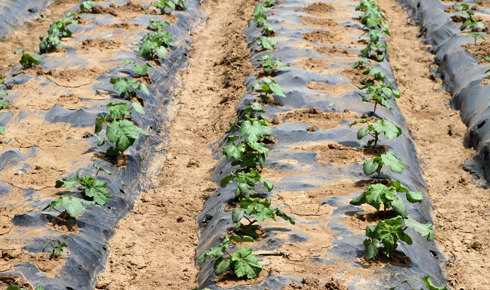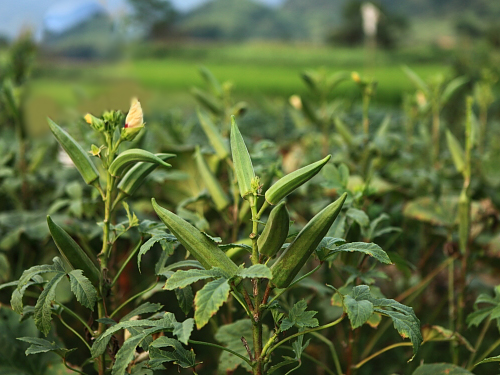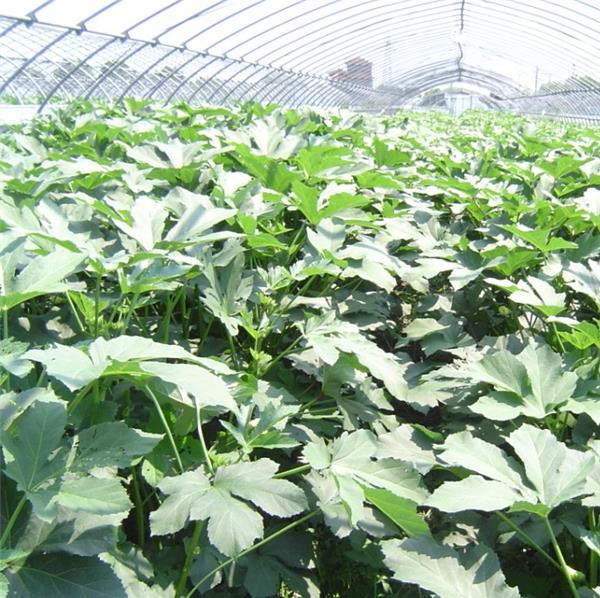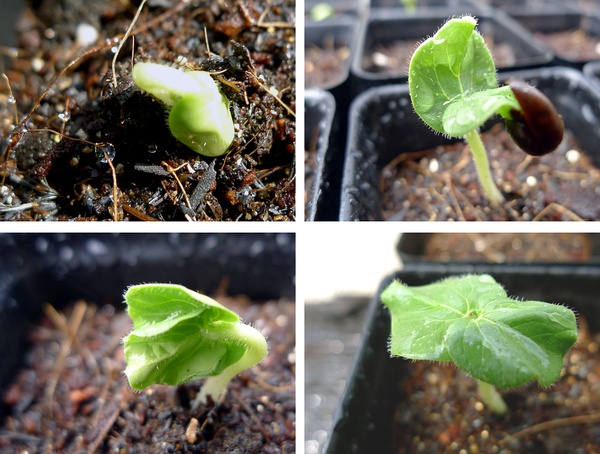[planting method of okra] how to grow okra
Okra is an annual herb, the root is straight root, the main root is developed, deep into the soil. Stem erect, highly Lignified, cylindrical, 1-2 m high, with lateral branches, green or dark purple, coarsely hairy. Okra likes warmth and is resistant to heat and cold. The optimum temperature for seed germination, growth and development is 25 ℃ and 30 ℃. The optimum temperature for flowering and fruiting period is 26 ℃ and 28 mol. The monthly average temperature is lower than 17 mol. Let's take a specific look at what is the planting method of okra.

Planting method of okra
Sowing seeds
(1) the main varieties of edible sunflowers are: conventional species, three eyebrows, spark sunflower, spark black blockbuster and American sunflower, etc.; hybrids, imported Dika brand DK119, domestic DK119 and RH118, RH3148, RH3708, RH3138, beautiful sunflower 138and so on. The main varieties of oil sunflowers are: S33 (ao 33), S47, G101, Kws303, kws203, Kangdi 102 and so on.
(2) during the sowing time, sunflowers can generally be sown when the soil temperature of 10 square meters reaches 8-10 degrees Celsius for five consecutive days. Generally speaking, the suitable sowing time for conventional varieties in our county is late April. When the growth period of hybrid varieties is more than 105 days, the general sowing time is about May 10, and when the growth period is less than 105 days, the general sowing time is late May.
(3) sowing methods for sunflower planting, it is better to plant sunflower in a single plant, preferably in one piece, but it can also be planted on the ridge and the edge of the ditch. Generally, corn spot seeder is used to sow seeds, and hoes or shovels are also used to sow seeds on demand. The sowing depth is suitable for 3m / m 5m / m.

(4) seed treatment has caused serious underground pests in recent years, and seed treatment must be carried out before sowing. The specific method is as follows: spray and mix the seeds with 40% isofloxophos and two pairs of water 6-8 jin, sow the seeds for 6 hours, wait for the seeds to dry 70%, and then sow.
Field management
The main results are as follows: 1. Sunflower seedlings grow fast and develop early in the seedling stage. in order to prevent the seedlings from crowding and overgrowing, the seedlings are corresponding when there is a pair of true leaves in the seedlings. Then, the seedlings should be fixed when there are 2 pairs of true leaves. In places where diseases and insect pests are serious or vulnerable, the seedlings can be fixed later, but it should not be after the emergence of 3 pairs of true leaves at the latest.
2. Sunflower fields are generally hoed three times by ploughing and weeding. Weeding was carried out with inter-seedling for the first time, shovel and hoe with fixed seedling for the second time, and weeding was carried out before ridge closure for the third time. While ploughing, the soil should be cultivated to prevent lodging.

3. Watering sunflower is a drought-tolerant crop. Generally, there is no need for watering at the seedling stage, the irrigation time of the head water should be postponed appropriately, the head water should be watered before the budding stage of the sunflower, two water should be watered at the flowering stage, and three water should be watered at the filling stage, and the whole growth period should be watered three times. Late watering should pay attention to the wind, so as not to lodge. In addition, in case of continuous rain or continuous high temperature and drought, less watering should be appropriate and foliar spraying should be carried out at the same time. Special attention should be paid to the principle of "dry and wet" after sunflower blossoms.
4. Some sunflower varieties with branching and artificial pollination have the characteristic of branching. Once the branches appear, they will cause nutrient dispersion and affect the development of the disk of the main stem. Therefore, when the plant bifurcates, it should be knocked out in time.
The function of okra
Kidney-tonifying vegetable, okra, has high nutritional value. Okra, also known as sheep's horn beans, Americans call it "plant Viagra", you can see its kidney-tonifying effect. It can improve a man's energy and physical strength in an all-round way, which is by no means the same as ordinary strengthening yang and tonifying the kidney. Okra, the king of kidney-tonifying vegetables, is the best way to solve physical fatigue.
A sticky substance of okra that can promote gastrointestinal peristalsis, aid digestion and benefit the intestines and stomach.
Hypolipidemic: the sticky substance of okra contains 50% soluble cellulose, which can effectively reduce serum cholesterol and prevent cardiovascular disease.
Hypoxia tolerance: can improve hypoxia tolerance

Protect the liver: the pectin of okra, polysaccharides can protect the liver and prevent constipation.
Prevention of colorectal cancer: okra contains 50% cellulose in its sticky substance, which is good for defecation, detoxification and cancer prevention.
Calcium supplement: okra not only has the same calcium content as fresh milk, but also has a calcium absorption rate of 50-60%, which is twice as high as that of milk, so it is an ideal source of calcium.
Lose weight: okra is a low-energy food, is a good weight loss food; anti-aging: flavonoids content of 2.8%, with antioxidant, anti-aging effects, prevention and treatment of diabetes
Okra feeds on tender pods, fresh and tender meat, rich in protein, vitamins, calcium and so on. Kidney-tonifying vegetables are often eaten to help digestion, protect the stomach, liver and skin, and enhance kidney function.
Related
- Wuhan Hospital Iron Tree Blooming Result Was Instantly Frightened by the Gardener Master
- Which variety of camellia is the most fragrant and best? Which one do you like best?
- What is the small blue coat, the breeding methods and matters needing attention of the succulent plant
- Dormancy time and maintenance management of succulent plants during dormancy
- Minas succulent how to raise, Minas succulent plant pictures
- What are the varieties of winter succulent plants
- How to raise succulent plants in twelve rolls? let's take a look at some experience of breeding twelve rolls.
- Attention should be paid to water control for succulent plants during dormant period (winter and summer)
- Watering experience of twelve rolls of succulent plants
- Techniques for fertilizing succulent plants. An article will let you know how to fertilize succulent plants.



